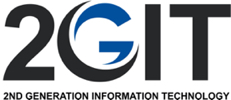In Fiscal Year 2022, ITC has continued making GSA’s hardware and software solutions easy to use, cost-effective, compliant, and convenient for agencies. Two of ITC’s blanket purchase agreements (BPAs), the 2nd generation IT (2GIT) BPAs and governmentwide strategic solutions (GSS) BPAs, have raised the bar, addressing the current risk climate by:
- incorporating supply chain risk management (SCRM) principles,
- improving product availability, and
- increasing customer training.
Whether you are looking for pre-competed commercial hardware, software, or ancillary services, ITC strives to deliver an efficient buying experience to get mission-enabling technology to you.
The 2GIT blanket purchase agreements
The 2GIT BPAs provide access to commercial off-the-shelf (COTS) hardware and software products and services. With almost 5 million products offered, they are available governmentwide, including to State, Tribal, and Local governments through GSA’s cooperative purchasing program.
SCRM is a foundational part of the 2GIT program, which employs groundbreaking SCRM best practices by performing active post-award compliance management in addition to 2GIT’s pre-award requirements.
With cybercrime (data breaches, ransomware attacks, etc.) threats on the rise, 2GIT’s SCRM requirement addresses vulnerabilities associated with IT products cycling through the vendor’s order and delivery processes. To date, the continuous monitoring and direct engagement with our 2GIT BPA team leads and distribution partner awardees has resulted in key process improvements through verification and validation.
2GIT also benefits from another line of defense in our ongoing efforts to reduce supply chain risk: the Verified Products Portal (VPP). This portal is designed to freely host authoritative product content, including standardized manufacturer names, part numbers, specifications and more for wholesalers and authorized distributors. By doing so,
- Buyers have accurate product descriptions.
- Only authorized distributors and resellers are listed.
- Industry products are marketed with authoritative and current information.
Since its pilot, the VPP has removed over 75,000 unauthorized products on GSA Advantage!® by working with industry.
2GIT by the numbers
- 43 agencies have ordered off of the 2GIT BPAs, taking advantage of the more than 50 small business partners from different socioeconomic categories.
- More than $127 million in sales have gone to small businesses, constituting more than 74 percent of total sales.
- Over 59,000 2GIT transactions have been conducted on GSA Advantage!®, demonstrating our easy online ordering process.
- ITC has conducted complimentary on-site and virtual customer support and training sessions on a global scale, including all Pacific and European Air Force units, reaching over 800 customers. These sessions are tailored to address unique aspects of the program, market research best practices, and how to procure through GSA eCommerce acquisition tools.
You can order 2GIT products through GSA Advantage!®, eBuy and Air Force Advantage!®. Agencies can submit requests for quote (RFQs) directly to 2GIT vendors on the eBuy portal under the BPA section. Only authorized 2GIT vendors can view and respond to RFQs posted there.
As we once again approach the end of another fiscal year, we encourage you to check out 2GIT as a straightforward purchasing option that helps meet your procurement needs and goals.
Visit gsa.gov/2git to learn more or use our IT Solutions Navigator to find the vehicle that’s right for you.
Follow ITC on Twitter and LinkedIn, and subscribe for blog updates.
